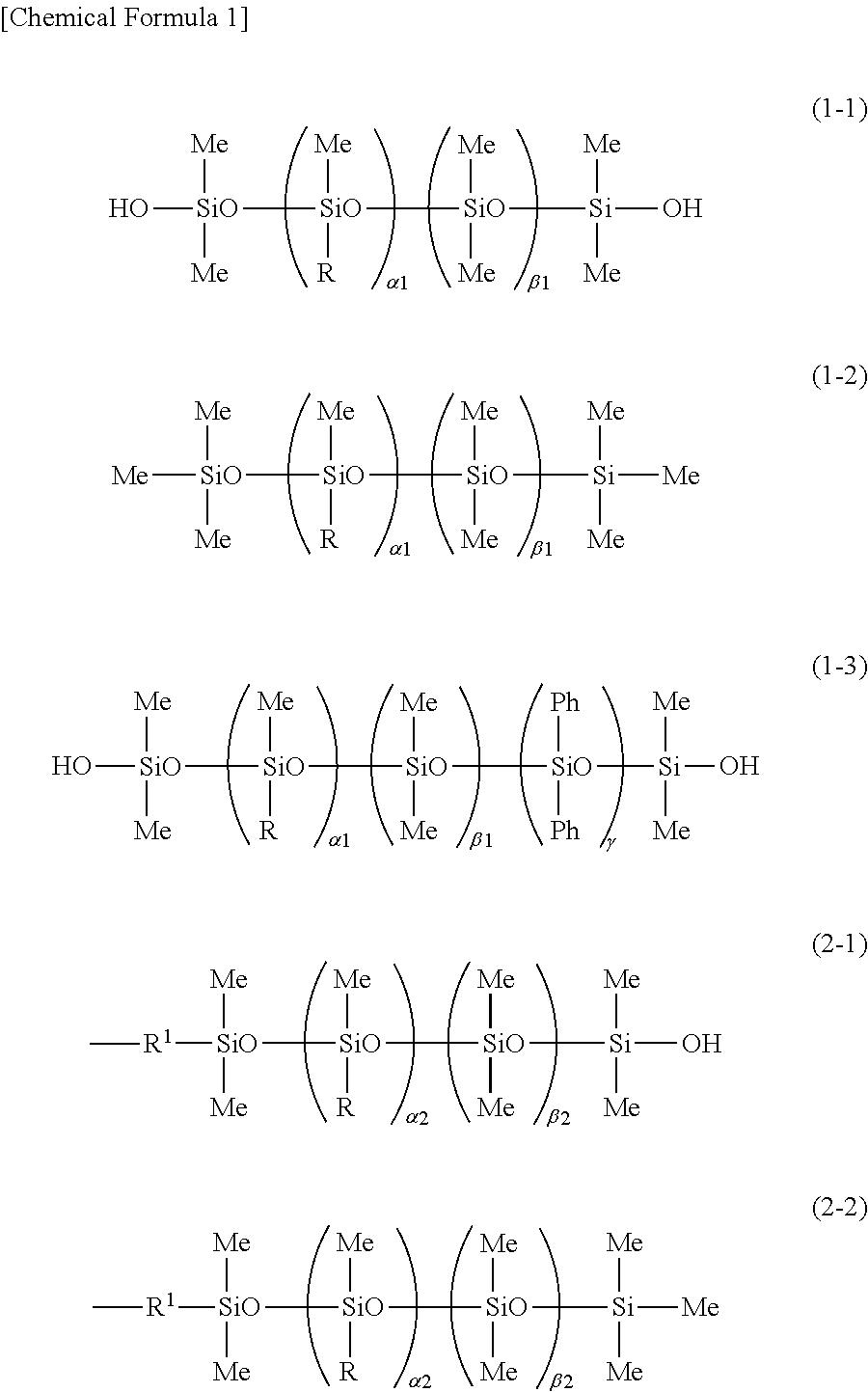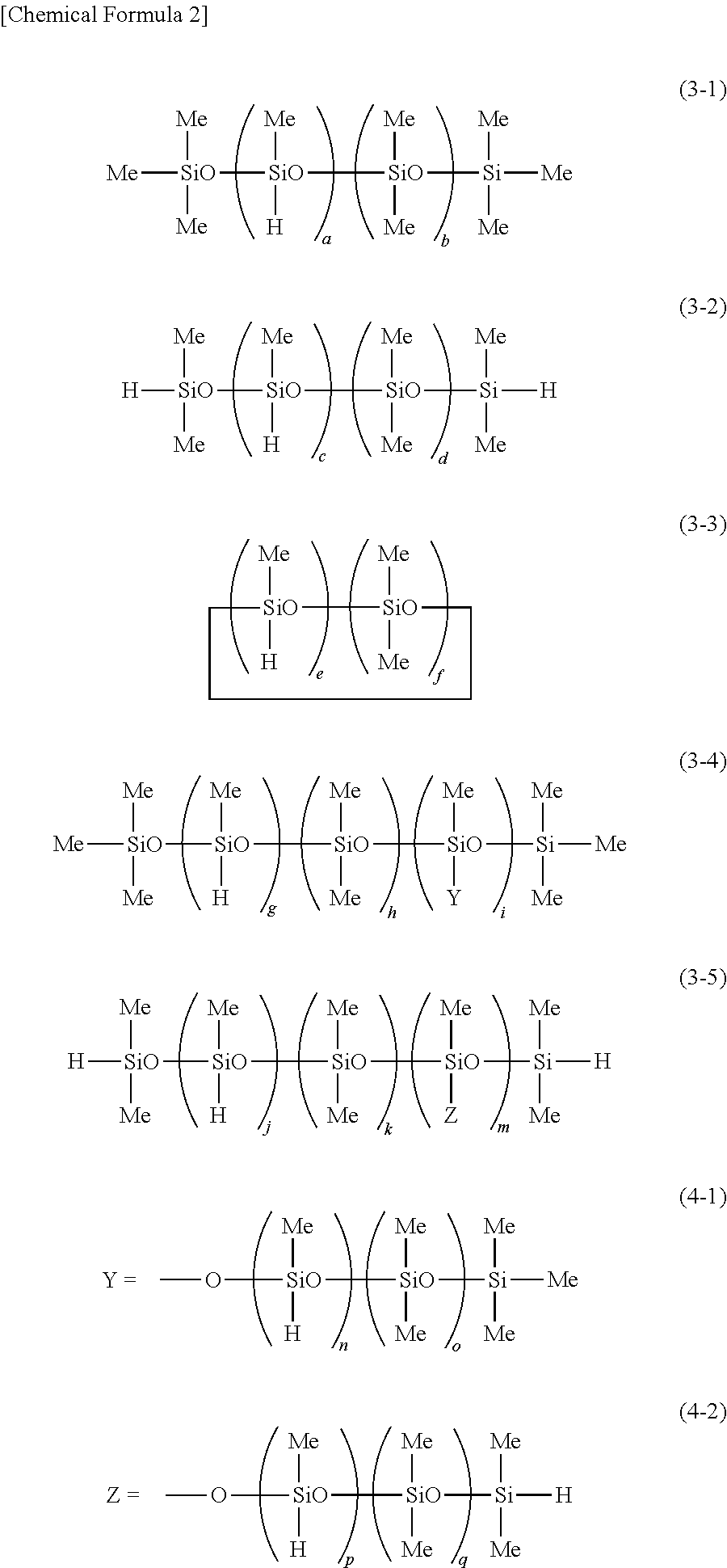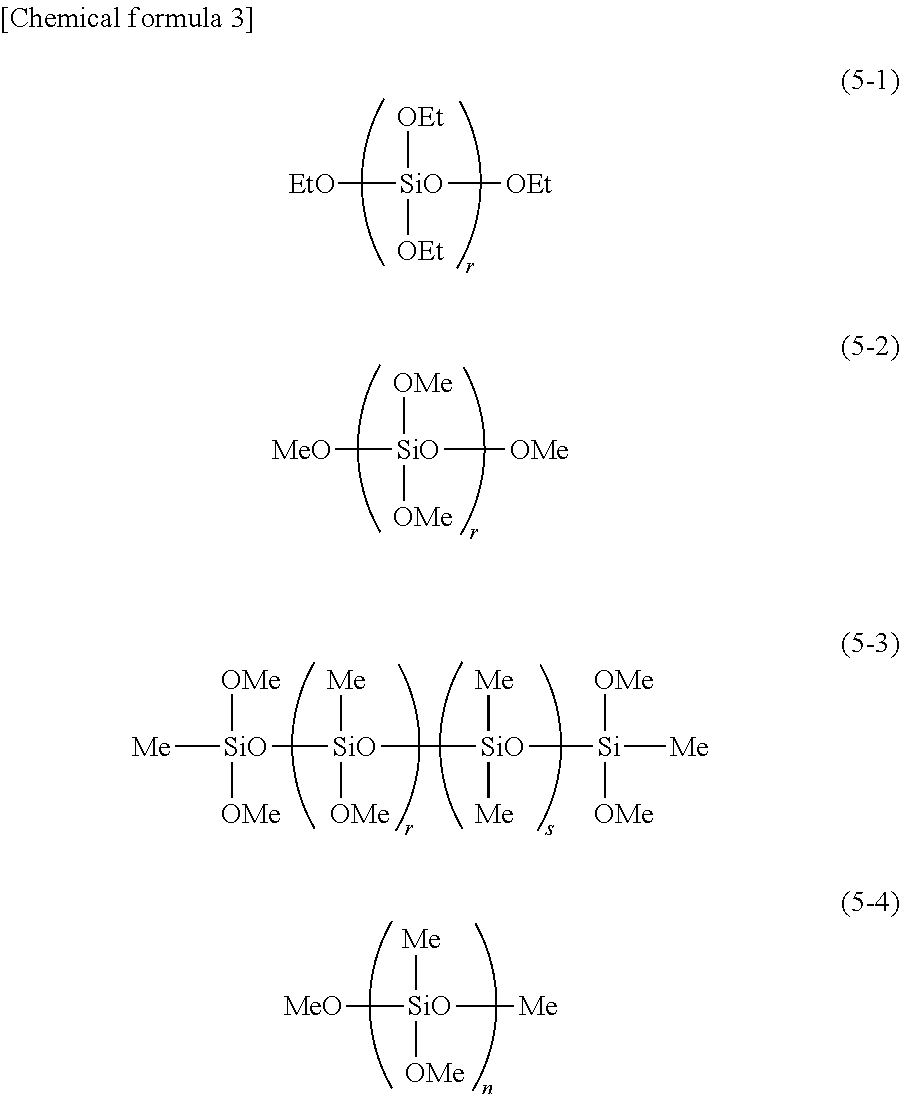Antistatic release agent and antistatic release film
a technology of antistatic release agent and antistatic film, which is applied in the direction of non-metal conductors, other chemical processes, conductors, etc., can solve the problems of unstable antistatic properties, easy charge, and easy charge, and achieve the effect of superior antistatic properties and release properties
- Summary
- Abstract
- Description
- Claims
- Application Information
AI Technical Summary
Benefits of technology
Problems solved by technology
Method used
Image
Examples
production example 1
[0276]206 g of sodium styrene sulfonate were dissolved in 1000 ml of ion exchange water followed by adding thereto, a solution of 1.14 g of ammonium persulfate preliminarily dissolved in 10 ml of water in a dropwise manner over 20 minutes while stirring at 80° C., and further stirring the solution for 12 hours.
[0277]1000 ml of sulfuric acid diluted to 10% by mass was added to the resulting sodium styrene sulfonate-containing solution. Subsequently, about 1,000 ml of polystyrene sulfonate-containing solution were removed using ultrafiltration. Moreover, 2,000 ml of ion exchange water were added to the residual liquid, and about 2,000 ml of solution were removed using ultrafiltration. The aforementioned ultrafiltration procedure was repeated three times. Subsequently, 2,000 mL of ion exchange water were added to the obtained filtrate, and about 2,000 mL of solution were removed using ultrafiltration. The aforementioned ultrafiltration procedure was repeated three times and the water i...
production example 2
[0278]14.2 g of 3,4-ethylenedioxythiophene and a solution obtained by dissolving 36.7 g of the polystyrene sulfonate obtained in Production Example 1 in 2,000 ml of ion exchange water were mixed at 20° C.
[0279]While holding at 20° C., an oxidation catalyst solution obtained by dissolving 29.64 g of ammonium persulfate and 8.0 g of ferric sulfate in 200 ml of ion exchange water were slowly added to the resulting mixed solution while stirring. The reaction was allowed to proceed for 3 hours.
[0280]2,000 ml of ion exchange water were added to the resulting reaction liquid and about 2,000 ml of the solution were removed using ultrafiltration. This procedure was repeated three times.
[0281]Next, 200 ml of dilute sulfuric acid having a concentration of 10% by mass and 2,000 ml of ion exchange water were added to the treated liquid on which the aforementioned ultrafiltration was carried out, and about 2,000 ml of the treated liquid were removed using ultrafiltration. Subsequently, 2,000 ml o...
production example 3
[0283]1,000 g of the PEDOT-PSS aqueous dispersion was freeze-dried to obtain 12 g of powder of PEDOT-PSS. To the obtained 12.0 g of powder of PEDOT-PSS, 2,882 g of isopropanol and 10.6 g of trioctylamine were added and mixed to obtain an isopropanol dispersion of PEDOT-PSS (1) having a concentration of 0.4%.
PUM
| Property | Measurement | Unit |
|---|---|---|
| viscosity | aaaaa | aaaaa |
| absolute viscosity | aaaaa | aaaaa |
| absolute viscosity | aaaaa | aaaaa |
Abstract
Description
Claims
Application Information
 Login to view more
Login to view more - R&D Engineer
- R&D Manager
- IP Professional
- Industry Leading Data Capabilities
- Powerful AI technology
- Patent DNA Extraction
Browse by: Latest US Patents, China's latest patents, Technical Efficacy Thesaurus, Application Domain, Technology Topic.
© 2024 PatSnap. All rights reserved.Legal|Privacy policy|Modern Slavery Act Transparency Statement|Sitemap



